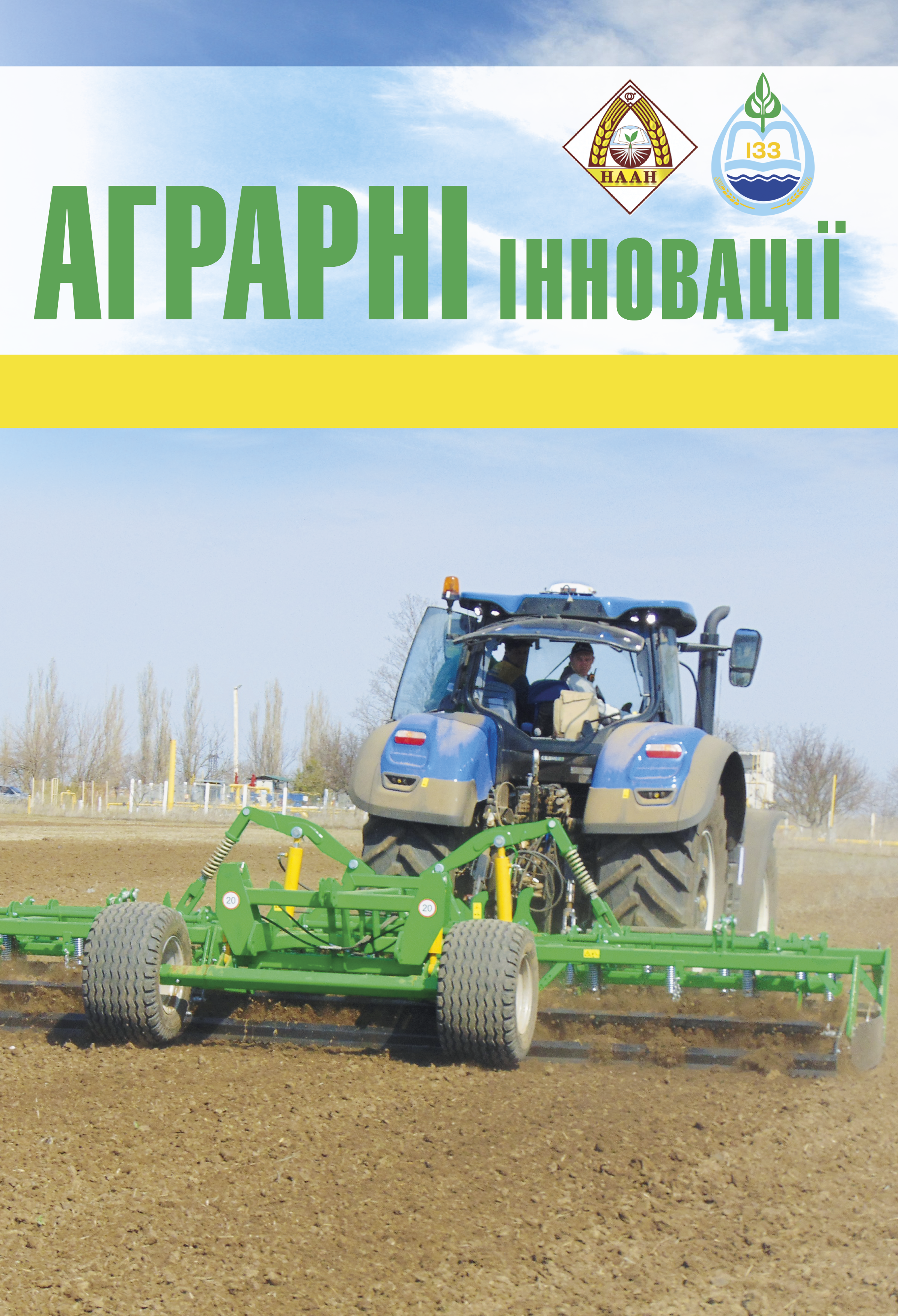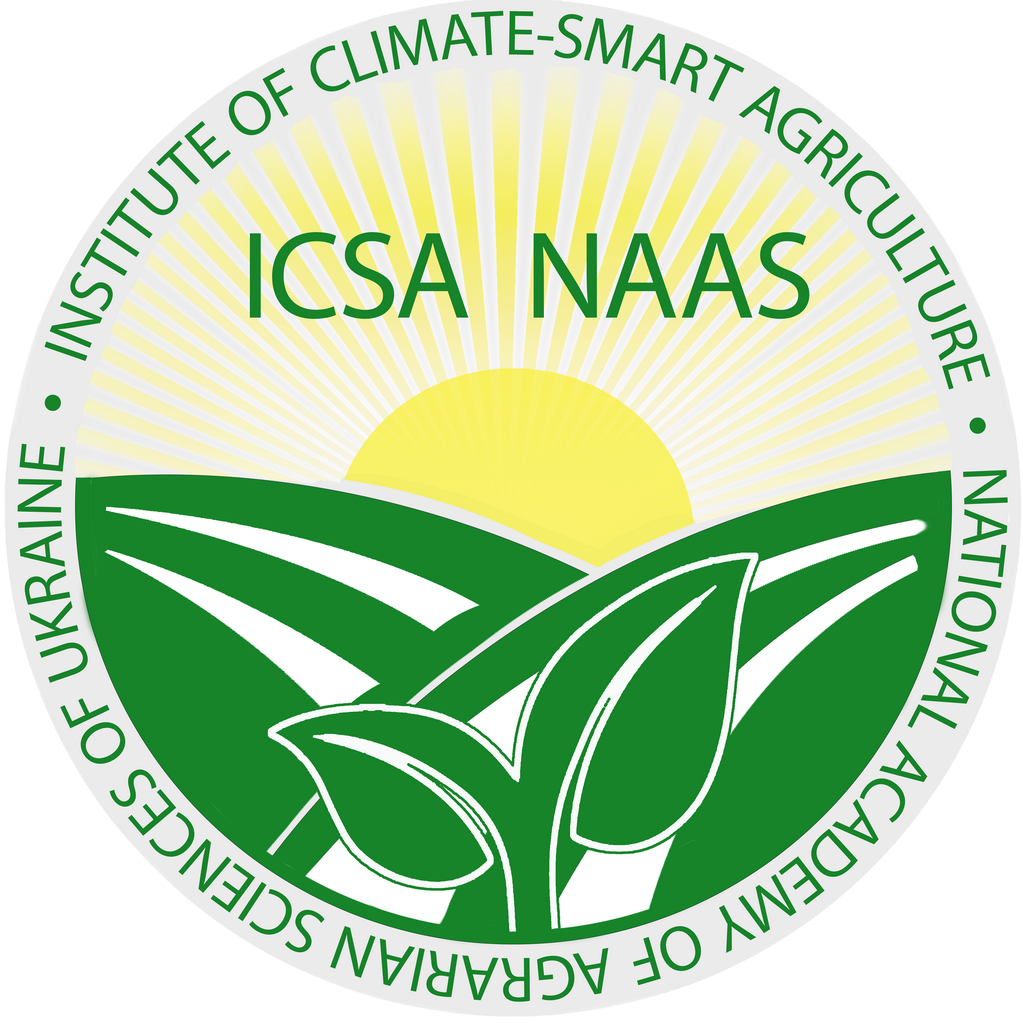From stubble to healthy soil: the role of biodestructors in agriculture
Abstract
The article studies the effective use of stubble and plant residues after harvest in agroecosystems and the possibilities of managing these residues using biodestructors. Biodestructors, represented by microorganisms such as bacteria and fungi, facilitate the decomposition of organic residues, improving soil fertility and agricultural crop productivity. Purpose. The study examines the dependence of the decomposition process on stubble biomass and climatic conditions, as well as the negative impact of chemical agents on beneficial soil microflora. Results. Research indicates that applying biodestructors can reduce the duration of stubble, straw, and other plant residue decomposition by 30-50%, enhance the physical properties of the soil, decrease the risk of pathogenic microorganisms’ development, and increase biodiversity. Biodestructors are environmentally safe, as they do not contain toxic substances and do not harm beneficial organisms, making them particularly attractive for organic farming. Thus, using biodestructors is an effective measure for managing plant residues, positively influencing plant growth processes and the overall productivity of agroecosystems. The article discusses the impact of biodestructors on the stubble decomposition process and their role in reducing greenhouse gas emissions, mainly CO2 and methane, into the atmosphere. Using these products activates beneficial microorganisms’ activity, promoting the effective transformation of organic residues into new compounds, thereby reducing emissions associated with anaerobic decomposition. Research supports that biodestructors improve soil quality and biodiversity by creating favorable conditions for the development of various organisms. They contribute to humus formation, enhancing soil structure and fertility, thereby increasing the stability and productivity of agroecosystems. Furthermore, the implementation of biodestructors allows for a reduction in fertilizer and pesticide costs, making them economically advantageous for production. Studies also indicate a positive impact of biodestructors on the restoration of degraded lands and increased agricultural crop yields. Conclusions. Thus, the use of biodestructors is an important step towards ecological sustainability and economic efficiency in modern agriculture.
References
2. Ефективність використання деструкторів целюлози для оптимізації факторів життя рослин соняшника / Домарацький Є., Базалій В., Козлова О., Домарацький О. Техніка і технології АПК. 2020. № 1 (114). С. 18–21.
3. Mondaca P., Celis-Diez J. L., Díaz-Siefer P. et al. Effects of sustainable agricultural practices on soil microbial diversity, composition, and functions. Agriculture, Ecosystems & Environment. 2024. № 370. Р. 109053.
4. Khanam M., Kabir M. H., Akter M. et al. Role of Microorganisms in Soil Health Management. In Climate Change and Soil-Water-Plant Nexus: Agriculture and Environment. Singapore: Springer Nature Singapore, 2024. Pp. 223–263.
5. Mohamed H. I., Sofy M. R., Almoneafy A. A. et al. Role of microorganisms in managing soil fertility and plant nutrition in sustainable agriculture. Plant growthpromoting microbes for sustainable biotic and abiotic stress management. 2021. Р. 93–114.
6. Сидякіна О. В. Ефективність біодеструкторів у сучасних агротехнологіях. Таврійський науковий вісник. 2021. № 119. С. 123–129. DOI https://doi.org/10.32851/2226-0099.2021.119.16
7. Ресурсоощадні заходи поліпшення родючості грунту та збільшення продуктивності рослин шляхом використання соломи / Гамаюнова В. В., Хоненко Л. Г., Коваленко О. А., Бакланова Т. В., Сидякіна О. В. Scientific multidisciplinary monograph «Science in the context of innovative changes». 2024. С. 230–251.
8. Gamajunova V. Sustainability of Soil fertility in Southern Steppe of Ukraine, Depending on fertilizers and irrigation / Dent D., Dmytruk Yu. (Eds.). Soil Science Working for a Living: Applications of soil science to present-day problems. Switzerland: Springer International Publishing, 2017. Pp. 159–166. doi: https://doi.org/10.1007/978-3-319- 45417-7
9. Панфілова А. В., Бєлов Я. В. Поживний режим ґрунту залежно від деструктора Екостерн Класичний та способу основного обробітку ґрунту. Аграрні інновації. 2022. № 16. С. 60–65. DOI https://doi.org/10.32848/agrar.innov.2022.16.10
10. Коваленко А., Коваленко О., Пілярський В. Вплив деструкторів на мінералізацію рослинних решток культур сівозміни та біологічну активність темно-каштанового ґрунту Степової зони за різних систем його обробітку. Аграрні інновації. 2020. № 2. С. 40-55. DOI https://doi.org/10.32848/agrar.innov.2020.2.8
11. Гамаюнова В. В., Нагорна О. В., Панфілова А. В. Вплив біодеструктору стерні на поживний режим ґрунту. Збірник наукових праць Вінницького НАУ. Серія: сільськогосподарські науки. 2012. Випуск 6 (68). С. 17–22.
12. Іванов А., Петрова О., Сидоренко В. Екологічні аспекти використання біодеструкторів у сільському господарстві. Журнал агрономії. 2022. № 15(3). С. 45–52.
13. Гамаюнова В. В. та ін. Вплив біодеструктора стерні на мікробіологічні показники грунту після ячменю ярого залежно від систем обробітку грунту та удобрення. Вісник ВНАУ. 2011. № 7(47). С. 7–11.
14. Петренко І., Коваленко Л. Вплив біодеструкторів на агрономічні властивості ґрунтів. Аграрна наука. 2023. № 22(1). С. 67–74.
15. Smith J., Brown A., Green T. The Role of Soil Microorganisms in Plant Health. Journal of Soil Science. 2020. № 45(3). Рр. 145–158.
16. Johnson R., Lee K. Biodegraders: A New Approach to Soil Health. Agricultural Research. 2019. № 12(4). Р. 234–240.
17. Garcia M., Patel S., Wong L. Impact of Soil Amendments on Microbial Diversity. Soil Biology Biochemistry. 2021. № 56(2). Р. 89–95.
18. Miller D., Thompson R. Enhancing Crop Yields through Soil Microbial Management. Crop Science Journal. 2022. № 60(1). Р. 77–85.
19. Панфілова А. В., Гамаюнова В. В., Дробітько А. В. Урожайність пшениці озимої залежно від попередника та біодеструктора стерні. Scientific Progress & Innovations. 2019. № 3. С. 18–25. https://doi.org/10.31210/visnyk2019.03.02
20. Сендецький В. М. Урожайність та якісні показники зерна кукурудзи за сумісного застосування соломи та сидератів. Таврійський науковий вісник. № 105. 2019. С. 147–154.
21. Гриценко Т. Біодеструктори: екологічні переваги та практичне застосування. Екологія та сільське господарство. 2023. № 18(4). С. 12–19.
22. Smith J., Johnson R. Impact of Soil Microorganisms on Carbon Emissions. Environmental Science Journal. 2020. № 34(5). Р. 345–360.
23. Garcia M., Patel S., Wong L. Biodegradation and Greenhouse Gas Emissions. Journal of Environmental Management. 2021. № 50(2). Р. 112-120.
24. Miller D., Thompson R. Strategies for Reducing Methane Emissions in Agriculture. Agricultural Sustainability Review. 2022. № 15(1). Р. 67–75.
25. Jones A., Smith L., Brown T. Enhancing Soil Biodiversity with Biodegraders. Soil Ecology Letters. 2021. № 18(3). Р. 145–158.
26. Williams R., Green P. The Role of Organic Matter in Soil Biodiversity. Journal of Agricultural Science. 2020. № 12(4). Р. 234–245.
27. Thompson J., Miller D., Patel S. Biodiversity and Ecosystem Services in Agroecosystems. Ecological Applications. 2022. № 32(6), e2543.
28. Anderson K., Lee H. Restoration of Degraded Lands through Microbial Diversity. Environmental Restoration Journal. 2021. № 29(2). Р. 99–110.
29. Сучасні підходи до застосування мінеральних добрив за збереження грунтової родючості в умовах зміни клімату / Гамаюнова В.В., Хоненко Л.Г., Бакланова Т.В., Коваленко О.А., Пилипенко Т.В. Наукові горизонти. 2020. № 2(87). С. 89–101.
30. Овчарук В. В. Побічна продукція рослинництва – альтернатива поповнення органічної речовини грунту. Dynamics of the development of world science. Vancouver, Canada. 2020. № 9. P. 781–788.
31. Ovcharuk V. Biomass potential of post-harvest residues as an organic fertilizers. The scientific heritage. 2020. № 49. P. 4–7.
32. Центило Л. В., Сендецький В. М. Біологічна ефективність використання біодеструкторів. Вісник ЖНАЕУ. 2014. № 2 (42). Т. 1. С. 93–99.
33. Левченко О. Економічна ефективність використання біодеструкторів у сільському господарстві. Фінанси та агробізнес. 2022. № 10(2). Р. 34–41.
34. Dudchenko V., Markovska O., Sydiakina O. Soybean productivity in rice crop rotation depending on the Impact of biodestructor on post-harvest rice residues. Ecological Engineering & Environmental Technology. 2021. Vol. 22, iss. 6. Рр. 114–121. DOI 10.12912/27197050/141466
35. Espolov T., Espolov A., Satanbekov N. et al. Economic Trend in Developing Sustainable Agriculture and Organic Farming. International Journal of Sustainable Development & Planning. 2023. 18(6). P. 478–487. DOI: https://doi.org/10.18280/ijsdp.180624






